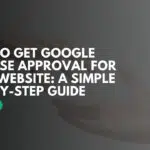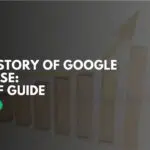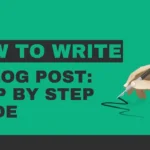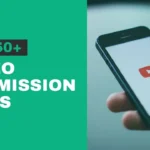Welcome to the ultimate guide on How to Write a Blog Post to boost your Traffic! In today’s digital age, blogs have become a powerful tool for sharing ideas, building communities, and driving traffic to websites. But with so many blogs out there, how can you make yours stand out from the crowd? That’s where this guide comes in.
In just 10 simple steps, we’ll take you from a novice to a master of blog writing. From finding your unique voice and identifying your target audience, to crafting attention-grabbing headlines and structuring your content for maximum impact, we’ve got you covered.
Along the way, we’ll also delve into the world of SEO and show you how to optimize your blog posts for search engines without sacrificing readability.
So whether you’re a seasoned blogger looking to up your game or a beginner just starting, get ready to transform your blog writing skills and take your online presence to new heights. Let’s dive in!
The Ultimate Guide: 10 Steps to Master the Art of Blog Writing
Quality blog writing is an essential part of achieving success in SEO and attaining higher rankings. Here, I will share with you a few simple guidelines that will help you grasp the art of writing blog posts that rank.
This specially crafted guide is ideal for newcomers in the field.
Let’s embark on this journey!
Step 1: Define your target audience
When it comes to blog writing, knowing your target audience is crucial. Before you start writing, take the time to define who your ideal readers are. Consider their demographics, interests, and pain points.
Understanding your audience will help you tailor your content to their needs and preferences. With a clear picture of your target audience in mind, you can create blog posts that resonate with them and keep them coming back for more.
To define your target audience, start by conducting market research. Use tools like Google Analytics to gather data about your website visitors. Look for patterns in their behavior, such as which pages they visit most frequently and how long they spend on your site.
This information will give you insights into who your audience is and what they’re interested in. Additionally, consider surveying your existing readers or social media followers to gather more specific information about their preferences and pain points. Armed with this knowledge, you can craft blog posts that address their needs and provide value.
Remember, your target audience may evolve, so it’s important to regularly reassess and refine your understanding of who they are.
As your blog grows, you may attract new readers with different interests and demographics. Stay open to feedback and be willing to adapt your content strategy accordingly.
Step 2: Conduct keyword research
Once you have a clear understanding of your target audience, it’s time to conduct keyword research. Keywords are the terms and phrases that people use to search for information online. By incorporating relevant keywords into your blog posts, you can increase your visibility in search engine results and attract organic traffic to your website.
Start by brainstorming a list of topics and ideas that are relevant to your blog and your target audience. Then, use keyword research tools like Google Keyword Planner or SEMrush to find related keywords with high search volumes and low competition.
Look for long-tail keywords, which are more specific and have less competition than broad keywords. These long-tail keywords will help you rank higher in search results and attract more targeted traffic.
When incorporating keywords into your blog posts, be sure to use them naturally and avoid keyword stuffing. Focus on creating high-quality, informative content that provides value to your readers.
By optimizing your blog posts for relevant keywords, you’ll increase your chances of ranking higher in search engine results and driving organic traffic to your website.
Step 3: Craft an attention-grabbing headline
The headline is the first thing readers see when they come across your blog post, so it’s important to make it attention-grabbing and compelling. A great headline not only piques the reader’s curiosity but also communicates the value they’ll get from reading your post.
To craft an attention-grabbing headline, consider using numbers or statistics, asking a thought-provoking question, or making a bold promise. For example, instead of “How to Improve Your Writing Skills,” you could write “10 Proven Techniques to Skyrocket Your Writing Skills in 30 Days.” This headline is more specific and promises a tangible result, making it more likely to attract readers’ attention.
In addition to being attention-grabbing, your headline should also be SEO-friendly. Incorporate relevant keywords into your headline to increase its visibility in search engine results. However, make sure your headline remains clear and compelling, as stuffing it with too many keywords can make it sound unnatural.
Remember, your headline sets the tone for your blog post, so spend time crafting a headline that hooks your readers and makes them want to keep reading.
Step 4: Structure your blog post
Creating a well-structured blog post is crucial for enhancing readability and engagement. It guides readers seamlessly through your content, enabling them to locate desired information effortlessly while optimizing the on-page SEO.
Here’s a suggested structure for your blog post:
1. Introduction: Begin your blog post with a compelling introduction that instantly captures the reader’s interest and sets the stage for the topic you’ll be discussing. Whenever possible, aim to include your focus keyword within the first 100 words of the introduction.
Crafting an introduction that grabs attention and incorporates your keyword effectively helps optimize your blog post for search engines while engaging your audience right from the start. By following this approach, you’ll create a human-friendly, SEO-optimized piece that appeals to readers and ranks well in search results.
2. Subheadings: Organize your blog post with clear sections and subheadings. Breaking down your content into easily scannable sections enables readers to quickly navigate to the parts that pique their interest the most.
When structuring your subheadings, from h2 to h6, do so thoughtfully and strategically. Before you start writing your blog, take a moment to outline its structure. Incorporate relevant keywords naturally into your subheadings, avoiding keyword stuffing.
By implementing these practices, you’ll create a user-friendly and SEO-optimized blog post that is both easy to read and effective in reaching your target audience.
3. Body: In the body of your blog post, provide valuable information, insights, and examples to support your main points. Use bullet points, numbered lists, or bolded text to highlight key takeaways and make your content more digestible.
4. Conclusion: Wrap up your blog post by summarizing the main points and providing a clear call to action. Encourage readers to leave comments, share the post on social media, or explore related content on your website.
By structuring your blog post in a logical and organized manner, you’ll make it easier for readers to navigate and understand your content. This, in turn, will increase engagement and keep readers coming back for more.
Step 5: Write engaging and informative content
Now that you have a solid foundation for your blog post, it’s time to focus on the content itself. Engaging and informative content is key to keeping readers hooked and encouraging them to share your blog post with others.
Start by researching your topic thoroughly. Use reputable sources, such as industry publications, academic journals, or expert interviews, to gather information and insights. Avoid relying solely on your personal opinions or assumptions. Back up your claims with data and examples to make your content more credible and valuable.
When writing your blog post, aim for a conversational tone that resonates with your target audience. Use storytelling techniques, anecdotes, and relatable examples to bring your content to life. Break up long paragraphs into shorter ones to make your content more readable and scannable. Incorporate images, videos, or infographics to enhance your content and provide visual interest.
Remember, engaging and informative content is the key to building trust with your readers and establishing yourself as an authority in your niche.
Put yourself in your readers’ shoes and ask yourself, “What value am I providing with this content?” By focusing on delivering value, you’ll create blog posts that resonate with your audience and keep them coming back for more.
Step 6: Incorporate visual elements
Incorporating visual elements into your blog post is an effective way to enhance the reader’s experience and make your content more engaging. Visual elements not only break up the text and make your blog post more visually appealing but also help to convey information more effectively.
Consider including images, infographics, charts, or videos that are relevant to your content. Visuals can help illustrate complex concepts, provide additional context, or simply add a touch of creativity to your blog post. Make sure the visuals you choose are high-quality, relevant, and properly attributed if necessary.
When placing visual elements within your blog post, consider the overall flow and readability. Avoid overwhelming your readers with too many visuals or placing them in distracting locations. Instead, strategically place visuals to complement your content and provide visual breaks when needed.
Remember, visual elements should enhance your blog post, not overshadow it. Use visuals thoughtfully to reinforce your message and engage your readers on a deeper level.
Step 7: Optimize your blog post for SEO
To maximize the visibility of your blog post in search engine results, it’s important to optimize it for SEO.
SEO stands for search engine optimization and involves making your content more appealing to search engines like Google. For this, you have to focus on the basics of SEO.
Start by incorporating relevant keywords into your blog post. Place them naturally throughout your content, including in the headline, subheadings, and body paragraphs. Use variations of your target keywords to increase the likelihood of ranking for a wider range of search queries.
Additionally, optimize your meta tags, including the meta title and meta description. These are the snippets of text that appear in search engine results and can greatly impact click-through rates. Make sure your meta tags accurately summarize the content of your blog post and include relevant keywords.
Another important aspect of SEO is optimizing your blog post’s URL. Use a descriptive URL structure that includes your target keywords.
For example, instead of www.yourwebsite.com/blog/post123, use www.yourwebsite.com/blog/master-the-art-of-blog-writing.
Lastly, make sure your blog post is mobile-friendly. With the increasing use of mobile devices, search engines prioritize mobile-friendly websites in their rankings. Ensure your blog post is responsive and loads quickly on mobile devices.
By optimizing your blog post for SEO, you’ll increase the likelihood of ranking higher in search engine results and attract more organic traffic to your website.
Step 8: Edit and proofread your blog post
Before publishing your blog post, it’s crucial to edit and proofread it thoroughly. Even the most well-researched and informative content can be undermined by typos, grammatical errors, or unclear sentences.
Start by reading your blog post out loud. This will help you identify any awkward phrasing or sentences that don’t flow smoothly. Pay attention to the overall structure and coherence of your content. Does each paragraph logically flow into the next? Are your ideas presented clearly and concisely?
Next, use editing tools like Grammarly or Hemingway Editor to catch any spelling or grammatical errors. These tools can also help you improve the readability of your content by suggesting simpler alternatives for complex words or sentences.
Finally, proofread your blog post for typos and formatting errors. Check that your headings and subheadings are consistent and properly formatted. Ensure your links are working correctly and that any images or visual elements are displaying properly.
By taking the time to edit and proofread your blog post, you’ll ensure that your content is polished and professional. This attention to detail will enhance your credibility as a writer and make your blog post more enjoyable for readers.
Step 9: Promote your blog post
Publishing your blog post is just the beginning. To maximize its reach and impact, you need to actively promote it. Here are some strategies to consider:

1. Share on social media: Share your blog post on your social media channels, such as Facebook, Twitter, and LinkedIn. Craft engaging captions and use eye-catching visuals to increase click-through rates. Encourage your followers to like, comment, and share your post with their networks.
2. Engage with online communities: Join relevant online communities, such as forums, Facebook groups, or LinkedIn groups, and share your blog post when appropriate. Be mindful of the community guidelines and provide genuine value to the members. Engage in discussions and answer questions related to your blog post to establish yourself as an authority.
3. Reach out to influencers: Identify influencers in your niche who have a large following and engage with their content. Once you’ve built a relationship, reach out to them and ask if they would be interested in sharing your blog post with their audience. Offer them something of value in return, such as a guest post or a collaboration opportunity.
4. Repurpose your content: Repurpose your blog post into different formats, such as an infographic, a video, or a podcast episode. This allows you to reach new audiences on different platforms and reinforces your message.
5. Email marketing: If you have an email list, send a newsletter to your subscribers announcing your new blog post. Personalize the email and include a clear call-to-action to encourage readers to click through and read your post.
It’s important to remember that promoting your blog post is just as crucial as writing it. By actively promoting your content, you can increase its visibility, reach a wider audience, and drive more traffic to your website.
To achieve this, mastering off-page SEO activity is vital, and you can learn more about it from my blog posts.
Step 10: Analyze and optimize your blog post
After your blog post has been published and promoted, it’s essential to analyze its performance and make adjustments as necessary. Use tools like Google Analytics to track important metrics, such as page views, average time on page, and bounce rate.
Analyze the data to identify patterns and trends. Which topics or types of content perform the best? Which headlines or keywords attract the most clicks? Use these insights to inform your future content strategy and optimize your blog posts for maximum impact.
Additionally, pay attention to reader feedback and comments. Engage with your audience and ask for their opinions or suggestions. This not only helps you better understand your readers but also fosters a sense of community and loyalty.
Regularly updating and optimizing your blog posts is key to staying relevant and maintaining a strong online presence. Keep an eye on industry trends and adjust your content strategy accordingly. Experiment with different formats, headlines, or topics to keep your blog fresh and engaging.
Conclusion
Congratulations! You’ve reached the end of the ultimate guide to mastering the art of blog writing. By following these 10 steps, you’re well on your way to becoming a master blogger.
Remember, mastering the art of blog writing takes time and practice. Be patient with yourself and continue to learn and grow. With dedication and a passion for creating valuable content, you’ll be able to stand out from the crowd and make a lasting impact in the blogosphere.
Happy blogging!












I loved as much as youll receive carried out right here The sketch is attractive your authored material stylish nonetheless you command get bought an nervousness over that you wish be delivering the following unwell unquestionably come more formerly again as exactly the same nearly a lot often inside case you shield this hike
Your point of view caught my eye and was very interesting. Thanks. I have a question for you.